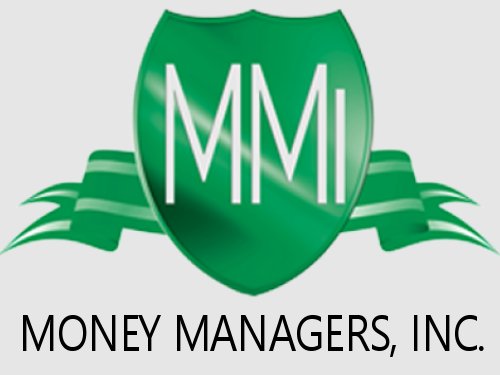A retirement savings vehicle designed for the smallest businesses.
Presented by Marc Aarons @ Money Managers Inc.
The solo 401(k), or solo (k) as it is sometimes called, allows a self-employed individual to set up a 401(k) plan combined with a profit-sharing plan. You can set up one of these if you work for yourself or own a small business with just 1-2 full-time employees including yourself (the second FTE must be your spouse).1
You & your business can save for the future at the same time. Imagine nearly tripling your retirement savings potential. With a solo 401(k), that is a possibility. Here is how it works:
• As an employee, you can defer up to $17,000 of your compensation into a solo 401(k) in 2012.
• As an employer, you can have your business make a tax-deductible contribution of up to 25% of your compensation to the plan in 2012.
• Total employer and employee contributions to a solo 401(k) are capped at $50,000 this year; if you are 50 or older, in which case you can also make a $5,500 employee catch-up contribution.1,2,3
The dollar-figure contribution limits stated above are subject to annual COLAs, of course. If you aren’t incorporated or are simply a sole proprietor, the 25% annual employer contribution limit is slightly reduced.1
If you are 50 or older and self-employed, you could potentially put as much as $55,500 into a solo 401(k) in 2012. Now add your spouse to the mix. Is he or she age 50 or older and a full-time employee of your business? Then the two of you could contribute up to $110,000 to the plan this year.1,2
You can skip contributions in a lean year. Employer and employee contributions to a solo 401(k) are wholly discretionary. You determine how much goes in (or doesn’t) each year.3
You can create a Roth solo (k). The Roth version of a solo 401(k) is just like any other Roth account: you contribute after-tax dollars in exchange for tax-free growth and eventual tax-free withdrawal. If you don’t want to go Roth, you can simply have a traditional solo 401(k) with pre-tax dollars going in, tax-deferred growth and eventual taxed withdrawals.2
Loans from the plan & rollovers into the plan are allowed. You can borrow up to $50,000 from a solo 401(k) or up to 50% of the total account balance (whichever is smaller). In certain cases, hardship withdrawals are permitted prior to age 59½. If you have money in a SEP, an IRA or an old 401(k) somewhere, those assets may be rolled over into a solo 401(k).1,4
There are some demerits to the solo 401(k). As you are setting up and administering a 401(k) plan for your business, you have to see that it stays current with ERISA and IRC regulations. Obviously, it is much easier to oversee a solo 401(k) plan than a 401(k) program for a company with 15 or 20 FTEs, but you still have some plan administration on your plate. You may not want that, and if so, a solo 401(k) may have less merit than a SEP or traditional profit-sharing plan. The plan administration duties are relatively light, however. If the assets in your solo (k) exceed $250,000, you will need to file Form 5500-EZ annually with the IRS. If they don’t, no such annual filing is necessary.1,4
What if you hire more employees? If that occurs, your solo 401(k) will be redefined under the IRC as two plans: a standard 401(k) plan and a profit-sharing plan. This makes retirement plan administration more complicated.
One other detail worth mentioning: the passage of EGTRRA made solo (k)s much more attractive for small business owners. Prior to EGTRRA, the contributions had to count toward the maximum profit-sharing contribution for the business, which was typically 15%. If the Bush-era cuts really do sunset in 2013, their expiration could theoretically affect solo 401(k)s.1
On the whole, solo 401(k)s give SBOs increased retirement savings potential. If that is what you need, then take a good look at this option. These plans are very easy to create, their annual contribution limits far surpass those of IRAs and stand-alone 401(k)s, and some custodians for solo 401(k)s even give you “checkbook control” – they let you serve as trustee for your plan and permit you to invest the funds across a variety of different asset classes.4
Marc Aarons may be reached at (714) 887-8000 or marc@ocmoneymanagers.com. www.ocmoneymanagers.com
This material was prepared by MarketingLibrary.Net Inc., and does not necessarily represent the views of the presenting party, nor their affiliates. Marketing Library.Net Inc. is not affiliated with any broker or brokerage firm that may be providing this information to you. All information is believed to be from reliable sources; however we make no representation as to its completeness or accuracy. Please note – investing involves risk, and past performance is no guarantee of future results. The publisher is not engaged in rendering legal, accounting or other professional services. If assistance is needed, the reader is advised to engage the services of a competent professional. This information should not be construed as investment, tax or legal advice and may not be relied on for the purpose of avoiding any Federal tax penalty. This is not a solicitation or a recommendation to purchase or sell any investment or insurance product or service, and should not be relied upon as such. All indices are unmanaged and are not illustrative of any particular investment.
Citations.
1 – www.axa-equitable.com/plan/business/understanding-individual-401k-plans.html [12/09]
2 – www.irs.gov/newsroom/article/0,,id=248482,00.html [10/20/11]
3 – money.cnn.com/retirement/guide/selfemployment_individual401k.moneymag/index.htm [2/14/12]
4 – news.yahoo.com/think-going-solo-401-k-183425759.html [7/15/11]

Comments are closed